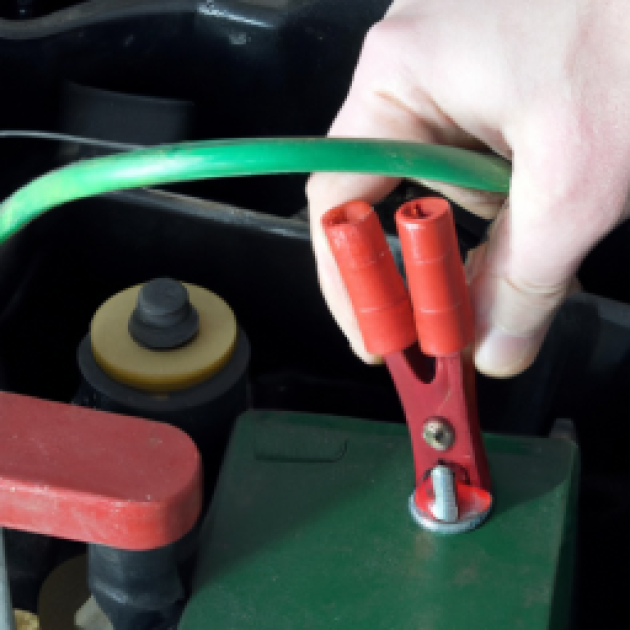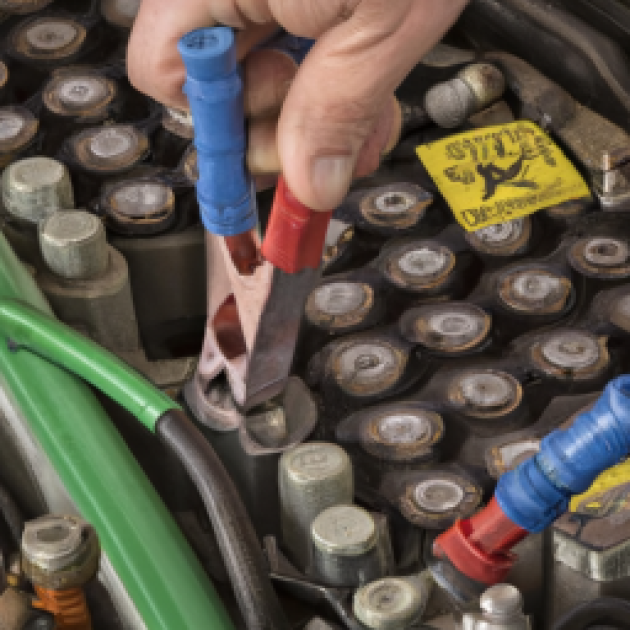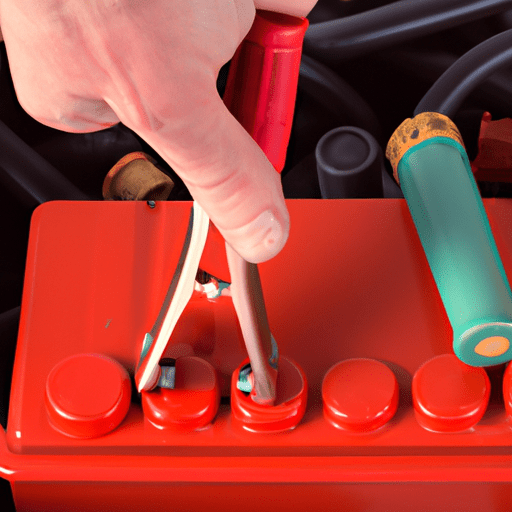Motorcarspecs.com delivers automobile industry news, and its unique content can entice viewers from all over the world. Every day, the Motorcarspecs.com team assists thousands of consumers in conducting vehicle research and comparing pricing on a wide range of automotive products and services. We’ve been pioneering innovative ways for prospective buyers to engage with automobiles and obtain timely and accurate information since January 2020. We created this platform for you, the viewers, to provide an honest evaluation on a relevant automobile, which we will completely review and post on our site.
How to Disconnect a Car Battery
Disconnecting a car battery is a relatively simple yet important maintenance task for any car owner. Knowing how to properly disconnect and connect a car battery can save time and energy. Here are the steps you should follow when disconnecting a car battery.
Tools and Supplies Needed:
- Wrench
- Battery Terminal Covers and Grease
- Wire Brush
- Towel
Step 1: Gather the Supplies
Before beginning, you must have all the necessary tools and supplies on-hand. These items can be purchased at any auto supply store.
Step 2: Put on Safety Gear
It is important to wear protective gear before disconnecting the car battery. This includes wearing thick gloves and safety glasses.
Step 3: Locate the Battery
The battery is usually located near the front of the engine compartment. Once you have located it, you should park the car on a flat surface to avoid any accidental rolling.
Step 4: Remove the Cables
Using a wrench, slowly loosen the nut that holds the black negative cable, also known as ground cable, to the battery. Once the black negative cable is loose, you can remove it and set it aside. Do the same for the red positive cable.
Step 5: Disconnect the Remaining Cable
If the cable is attached to the car body, you will need to use a wrench to securely remove it. Once the cable is loose, it can be removed from the car and set aside.
Step 6: Clean the Terminals and Battery Lid
Using a wire brush, carefully clean off the battery terminals and the inside of the battery lid. This is important to ensure proper connection when reconnecting the battery.
Step 7: Insulate the Terminals
Once the terminals and battery lid have been cleaned, you can place a battery terminal cover over each. Then, use some battery terminal grease to ensure a good connection.
Step 8: Reconnecting the Battery
Reconnect the red positive cable and the black negative cable to the battery, making sure to firmly tighten the nuts with a wrench. Check to make sure the connections are secure.
Step 9: Check for Leaks
Using a towel, wipe off any excess grease and inspect the terminals for any leaks.
Once the connections have been checked, you can reinstall the battery lid. Congrats, you have successfully disconnected and reconnected your car battery!
What are the risks of disconnecting a car battery?
1. Damage to electrical components: Disconnecting the battery can shock or damage any connected electrical components, potentially causing expensive damage.
2. Loss of data: Car computers store information on previous engine performance, current settings, and more. Disconnecting the battery can cause this data to be lost, resulting in false readings or resetting settings to factory defaults.
3. Loss of security: Many modern cars include electronic anti-theft systems, such as keys with a chip, that require the car battery to stay connected even without the key in the ignition. Disconnecting the battery can reset these systems and make it easier for the car to be stolen.
4. Possibility of explosion: If a battery’s terminals accidentally touch together or come into contact with a metal object, it can cause sparks and an explosion. It is safest to always disconnect one cable at a time, ensuring the connected cable never comes into contact with any metal object while being disconnected.
What are the risks of not disconnecting a car battery?
1. Damage to the vehicle’s electronics: Electrical current can cause damage to the sensitive electronics that are present in most vehicles. If you don’t disconnect the battery, you may be at risk of damaging essential components in your car like the starter and alternator.
2. Risk of explosion or fire: If a circuit is shorted and exposed to direct current, there is a risk of an explosion or fire. By disconnecting the battery and all the cables you’re ensuring that this kind of event is avoided.
3. Rash electrical current discharge: If you don’t disconnect the battery, there is a risk that the electricity stored in it can at times be discharged in a very rash manner, which can be damaging.
Regardless of whether you’re planning to jump start your car, replace a faulty battery, or just disconnect it for a short time, knowing how to properly disengage a car battery is very important. Here are some steps to take to ensure that the process is done correctly and safely.
Step 1 – Locate the Car Battery
The car battery is typically located under the hood, near the front of the vehicle. Locate it so that you can begin the process of disconnecting it.
Step 2 –Locate the Battery Terminals
The battery terminals are typically situated on the top of the battery, and can be recognized by two metal knobs labeled with either a “+” or a “-” symbol.
Step 3 – Disconnect the Negative Terminal First
You should always start by disconnecting the negative terminal (labeled with a “-” symbol) before disconnecting the positive terminal. This will ensure that you are disconnecting the negative first, which will help to prevent sparks and minimize the chance of any electrical shock.
Step 4 – Disconnect the Positive Terminal
After you have disconnected the negative terminal, you can disconnect the positive terminal (labeled with a “+” symbol). If necessary, you can use a wrench to loosen the screws prior to taking the terminal off.
Step 5 – Use Protective Gear
Disconnecting a car battery can be potentially dangerous, so it is important to wear protective clothing and equipment to prevent any electrical shocks. This includes gloves, safety glasses, and non-flammable overalls.
Step 6 – Replace the Car Battery
If you’re replacing the car battery, make sure to secure it in the right place, and reconnect the positive and negative terminals in the correct order. Once you’ve done this, you can turn on the engine and start driving.
It is important to follow all the necessary safety precautions when disconnecting a car battery, as electricity can be dangerous if not handled properly. If you’re unsure about how to properly disconnect the battery or feel unsafe, contact an expert for assistance.
1. How do I safely disconnect a car battery?
To safely disconnect a car battery, first turn off the vehicle’s ignition and any auxiliary devices. Next, loosen the negative terminal first, which is typically black and has a a minus sign (-). Finally, loosen the positive terminal, which is typically red and has a plus sign (+). Once both cables are removed, you can safely disconnect the car battery.
2. How do I clean electrical terminals on a car battery?
Answer: Unhook the battery cables, then clean the battery terminals with a wire brush. You can also use a baking soda and water mixture to clean the terminals. Finally, use a rag or cloth to dry the terminals, then reattach the battery cables.
What type of cleaning material should be used for electrical terminals on a car battery?
A clean, non-abrasive cloth should be used for cleaning electrical terminals on a car battery. An old toothbrush may be used to gently scrub stubborn deposits. Make sure that the cloth and/or toothbrush is dry to prevent accidental sparking. An electrical terminal cleaning solution may also be used.
What kind of tools should be used to clean electrical terminals on a car battery?
The two most common tools used to clean electrical terminals on a car battery are a battery post brush and a battery terminal-cleaning tool. The post brush can be used to safely scrub corrosion off of the terminals, while the terminal-cleaning tool is designed to scrape away corrosion and debris from the terminal itself.


